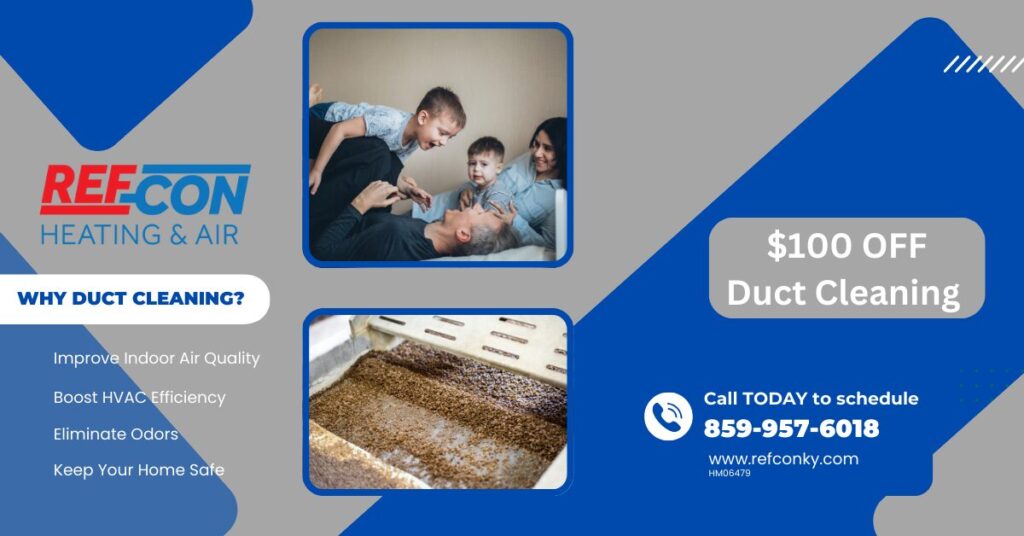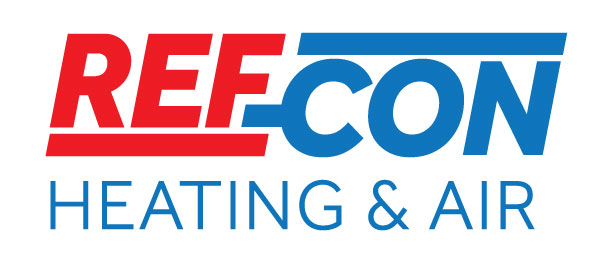
Air Duct Cleaning Lexington, KY
Having clean air flow through home ductwork is important for your family’s health. Having cleaning duct work will also improve your HVAC systems efficiency to heat and cool your home. It is recommended to get your Lexington, KY home air ducts cleaned every other year. Indoor Air Quality services in Lexington, Kentucky have come a long way over the years. You have entire home dehumidifiers, UV lights (ultraviolent lighting) humidifiers but nothing is better than having professional air duct cleaning services. Schedule a duct cleaning appointing today.
Air Duct Cleaning Services in Central Kentucky.
1. You Will Improve Indoor Air Quality
The air circulating through your ducts is the same that you and your family members breathe. Unfortunately, indoor air contains contaminants like pet dander, dust, volatile chemicals, carbon monoxide, and pesticides that get pulled into the HVAC unit. Over time, these pollutants accumulate within the ductwork and then re-enter your living space. Every time you breathe in such contaminants, they have the potential to trigger coughs, sneezing, bronchial congestion, and other respiratory illnesses. Cleaning the ductwork often will help eliminate such harmful particles, improve indoor air quality, and protect your family members’ health.
2. Cleaning the Ducts Will Boost Your HVAC Unit’s Efficiency
Once dust particles and other debris accumulate beyond a certain level within the ductwork, they impede airflow. This will cause inefficient flow of conditioned air, leading to cold and hot spots within your house. Your HVAC unit will have to work harder to try and circulate warm or cool enough air. The unit will thus consume more energy, resulting in higher utility bills. Once you clear off the debris from the ductwork, air can travel freely, allowing the HVAC system to perform at peak efficiency and saving you money.
3. It Eliminates Awful Odors
Paint fumes, tobacco smoke, cleaning agents, mildew, and food contribute to smells in the house. Stale odors may get trapped in the ductwork and repeatedly flow throughout the home. Bacteria and mold can also grow in the ducts and emit awful smells. When neglected, rodents and other critters make their way into the ductwork and leave behind some droppings. Others get trapped, die, and decompose, emitting stinky odors. Even after opening the windows or using air fresheners, such smells don’t go away. Duct cleaning helps eliminate contaminants and dead critters and discourages insects from nesting since they are less likely to find hiding spaces in clean ducts. This will restore a fresh smell to your house.
4. You Will Maintain a Cleaner Environment
When you turn off your HVAC unit for a few hours, dust particles accumulate in the ductwork. Once you turn on the unit, the particles recirculate in the house. They settle on your beddings, furniture, floor, and other objects. You will need to dust the surfaces often to keep your home clean and hygienic. If you notice that your house is becoming unusually dust, you need to check the ducts. When you clean the ductwork, you prevent pollutants from getting into your house repeatedly and can keep your home cleaner for a longer time.
5. It Helps Eliminate Irritants
Air ducts may also hold some harmful microorganisms. If you have children or live with seniors or people with compromised immune systems, recirculation of airborne contaminants can cause adverse health issues. When pet dander, animal fur, mold spores, and pollen enter the house, they can trigger allergic symptoms and asthma attacks. A periodic air duct cleaning will help prevent allergens from circulating throughout the home, creating healthier living conditions. Cleaner air also makes it easier to breathe. This will reduce sick time, medical bills, and discomfort levels.
6. It Keeps Your Home Safe
Dirty ducts can cause a fire. Over time, dirt, lint, and other materials may accumulate within the ductwork, and when they heat up, they might ignite and cause a fire. This can lead to massive damage to valuable property and puts the lives of your loved ones at risk. The risk is even higher for those with an old HVAC unit or if you use propane for your furnace, fireplace, or stove. It’s therefore vital that you conduct regular duct cleaning to reduce fire risks and keep your house safe.
7. Cleaning Ducts Can Prolong the Unit’s Lifespan
Dirty ductwork causes your unit to run for a more extended period to maintain comfortable indoor conditions. This strains the system and causes wear and tear, which leads to frustrating breakdowns in the middle of the season. As a result, you will have to call for emergency repairs more often than usual. If you continue to use the unit in such a condition, you will strain vital components like the motors and compressor and, eventually, the HVAC system will fail. You will need to replace the entire unit earlier than expected. A regular air duct cleaning routine will help prolong the lifespan of your HVAC system.
8. The Air Filters Will Last Longer
The air filters trap dirt and other contaminants present in your indoor air. If there is too much dust in the ductwork, the air filters will get clogged faster than usual. You will therefore need to clean or replace them more often. This can be very tedious, so it’s a good idea that you clean the ducts often to eliminate such contaminants and help your filters last longer.
9. Technicians Can Spot Other Problems During Duct Cleaning
If you seek professional duct cleaning services, the technician will check for other issues throughout the ductwork. They will inspect the ducts for leaks, rust, gaps, and loose
connections. The technician will also insulate the ductwork when necessary to improve the efficiency of your unit. A professional can quickly spot and fix any other issues within your
HVAC system that you had not noticed before. They will change or clean the air filters, lubricate parts, and ensure that all other components run smoothly. Fixing minor issues will help prevent more extensive damage in the future.
Indications of IAQ Problems in a Home*
1). Excessive dust
2). “Stuffy” rooms
3). Some rooms feel hot or cold when the rest of the house feels comfortable
4). Moisture on window panes
5). A mildew (musty) smell in your home
6). Family members often sneeze, feel lethargic, or have dry skin
7). In-room air cleaners are in use in the home
8). Air fresheners or scented candles are used to improve the smell in the home
Recommendations for Improving IAQ*
1). Inspect, clean and repair dirty and/or compromised duct work.
2). Homeowners can install mechanical ventilation, which dilutes volatile organic compounds (VOCs) by introducing fresh outdoor air. Mechanical ventilation is like opening window,
but doing so in a more energy efficient manner.
3). Use a doormat—a wipe-off mat will cut down on one of the biggest carriers of particulates in home: the bottoms of shoes.
4). Use high efficiency particulate air filter (HEPA) or central vacuum system.
5). Limit smoking indoors.
6). Use exhaust fan while cooking.
7). Use bathroom exhaust fan.
8). Wash bedding frequently in hot water of at least 140°F.
9). Limit indoor flame sources.
10). Limit the use of scented candles and/or room fresheners.
11). Seal door between house and garage.
*Source: AirAdvice State of Our Indoor Air Report
RotoBrush is what we use. If you need pics here is there website https://www.rotobrush.com/
